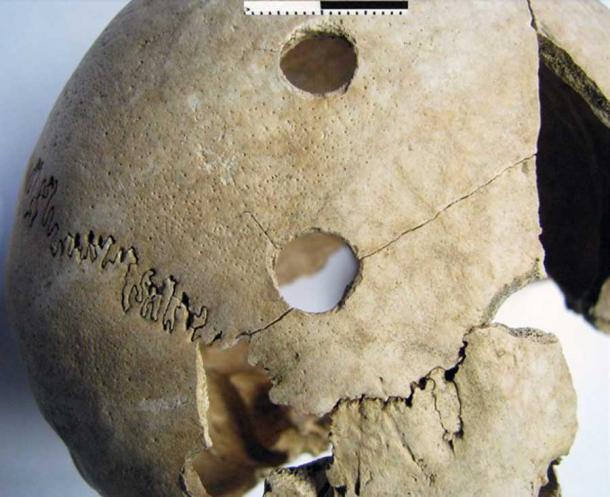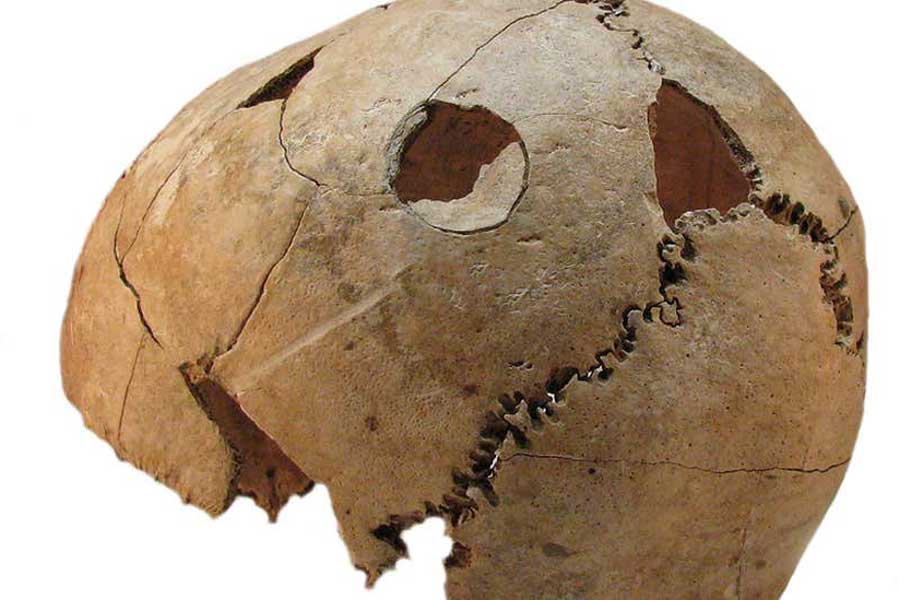6,200-Year-Old Croatian Massacre Solved With Genetic DNA Study
Archaeologists called to a home construction site in the village of Potočani in eastern Croatia in 2007 made a gruesome discovery. They found evidence of a massacre site that included the scattered and battered skeletal remains of what turned out to be 41 separate individuals, who had all been brutally murdered by assailants unknown. The bodies at the Croatian massacre site had been quickly and haphazardly buried in a shallow grave 6.5 feet (2 meters) in diameter and 3 feet (1 meter) deep. Based on the size of the skeletons, they knew immediately that the dead included children as well as adults.
Initially, the Croatian archaeologists assumed they’d found a mass grave that could be linked to recent conflicts, like World War II or internal strife in the Balkans in the 1990s. But the discovery of pottery pieces of clearly ancient origin was their first clue that such an association was unlikely. Later, radiocarbon dating on some of the bones excavated from the site revealed the truth, that the individuals in the grave had been buried six thousand years earlier, in approximately the year 4,200 BC.
Curiosity about the nature of the Croatian massacre site, both with respect to its motivations and the identity of its victims, has persisted. Now, 14 years after the original discovery, the results of an extensive analysis of DNA performed on bones removed from the site have revealed new and important details about the victims. Archaeologists now know the true identities of the poor souls who were violently slaughtered several millennia ago, on a haunted landscape, that experienced massive trauma and bloodshed in far more recent times.
- Nomadic Avar Warrior Graves From Dark Ages Unearthed in Croatia
- 1800-Year-Old Horse and Chariot Burial Discovered in Croatia

The Croatian massacre mass burial found at Potočani: a) the upper layers of the pit showing numerous commingled skeletons; b) illustration of the various bodies and human remains found at the Croatian massacre site. (Prof. Mario Novak, et al / PLOS ONE)
The Croatian Massacre: Basic Facts And Genetic Findings
The latest research was carried out by an international team of scientists with expertise in genetic analysis, through the Centre for Applied Bioanthropology at the Institute for Anthropological Research in Zagreb, Croatia.
The scientists were able to extract unique DNA samples for 38 of the 41 individuals. Based on preliminary assumptions, they had expected to find that most of these people were closely related and had perhaps had all come from one extended family.
Surprisingly, the opposite proved to be the case. Only 11 of the 38 individuals were directly related, meaning more than two-thirds of the victims had no familial connections with any of the others.
Nevertheless, all of the victims shared a common ancestry. Deep genetic analysis revealed their descendants had come from the ancient region known as Anatolia, which covered an area that is occupied by the nation of Turkey today. A limited percentage of their DNA (around nine percent) derived from contacts with hunter-gatherer peoples in Western Europe, where wandering groups from Anatolia had arrived centuries before they established a presence in the region now known as the Balkans.
The genetics of the deceased individuals allowed the scientists to positively identify them as belonging to the Lasinga culture. The Lasinga people were pastoralists who arrived in the Balkans in search of good grazing land, and over time they became more settled and began to practice a diverse form of agriculture (although cattle raising remained predominant). During the Eneolithic period (Copper Age), the Lasinga people populated an expansive area of land in the region, which included what is now Slovenia, northern Bosnia, eastern Austria, western Hungary, and continental Croatia.
The new genetic study proved that the Lasinga victims of the massacre came from a population pool that ranged somewhere between 20,000 and 75,000 people in size. This shows they belonged to a unified, homogenous farming culture, and in no way were outsiders or interlopers in the region where their bodies were unearthed.
From a demographic perspective, the victims formed an unusually diverse mixture. There were 21 males and 20 females, and 21 of the victims were between the ages of two and 17 (the remainder where between 18 and 50). All had been killed at the same time, murdered during a relentless onslaught carried out by individuals armed with stone and metallic tools that caused deep cuts and blunt force trauma. The victims were all slashed, stabbed, and/or beaten to death, and the lack of any defensive wounds on their remains shows they were either sedated or under some type of restraint at the time they were killed.
“They were not defending themselves,” said Prof. Mario Novak, an archaeologist from the Institute for Anthropological Research in Zagreb and the lead author of the PLOS ONE article that discussed the new findings. “I would say that this was a pre-planned mass execution.”
Given the location of the mass grave, and the identity of the victims, it seems clear that the murderers were not outsiders. They must have been individuals who belonged to the same culture, and who resided in the same region.
But what exactly was their relationship to their victims? And why did they do what they did, in the brutal manner that they did it?
“That’s the one million-dollar question,” Novak declared. “We just don’t know … we don’t have any traces of the people that committed the atrocity.”

Penetrating injuries on the right side of the skull of a young adult female from the Potočani massacre. (Prof. Mario Novak / Institute for Anthropological Research)
The Universality Of Mass Murder And The Psychology Behind It
Archaeologists have uncovered evidence of massacres that occurred as far back as 13,000 years ago. Every subsequent era has produced evidence of similar slaughters, which were not side effects of warfare but incidences of intentional mass murder, inflicted on men, women, and children without discrimination. As time has passed the pace of such massacres has only accelerated, in response to world population growth that has brought more people in closer contact.
- Viminacium: Where Mammoths Roamed and Romans Ruled
- Archaeologists Identify First Prehistoric Figurative Cave Art in Balkans - It’s Symbolic!
Ancient historians and archaeologists theorize that most past atrocities were a consequence of resource shortages, which were brought on by climate change or overpopulation.
While this explanation may be correct in some cases, however, our modern experience with mass slaughter suggests the situation was likely more complicated. Since the turn of the 20 th century (to pick an arbitrary date), we’ve witnessed appalling violence and mass murder inspired by religious factionalism, ideological fanaticism, cultural or social alienation, racism and ethnic hatred, territorial ambitions, and political expediency, just to name a few of the causes.
Archaeologists will never know for sure why the 41 people found in the mass grave near Potočani were killed, or by whom. But it would be an error to assume that ancient humans were somehow less complex than we are, and only likely to be motivated by environmental contingencies or purely practical considerations. Humans have proven time and again that they can be motivated to hate and scapegoat for an endless variety of reasons, any of which could ultimately lead to the most horrific outcomes imaginable.
Top image: This skull from a teen boy, found at the Croatian massacre site, clearly shows blunt force injuries in two locations. Source: Prof. Mario Novak / Institute for Anthropological Research
By Nathan Falde


















